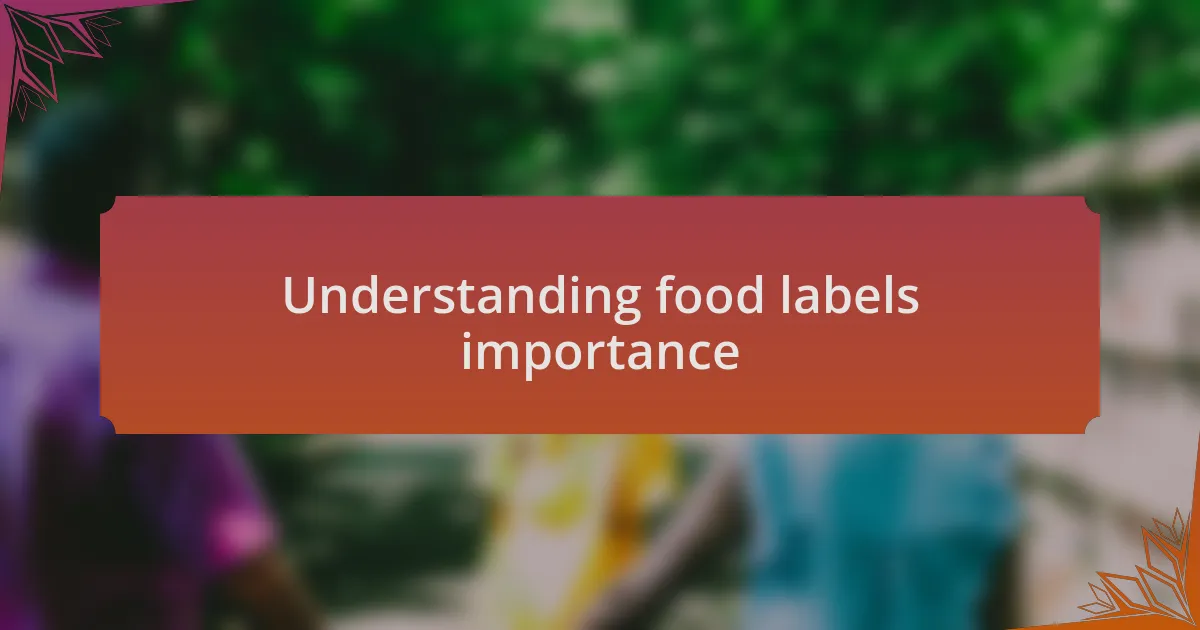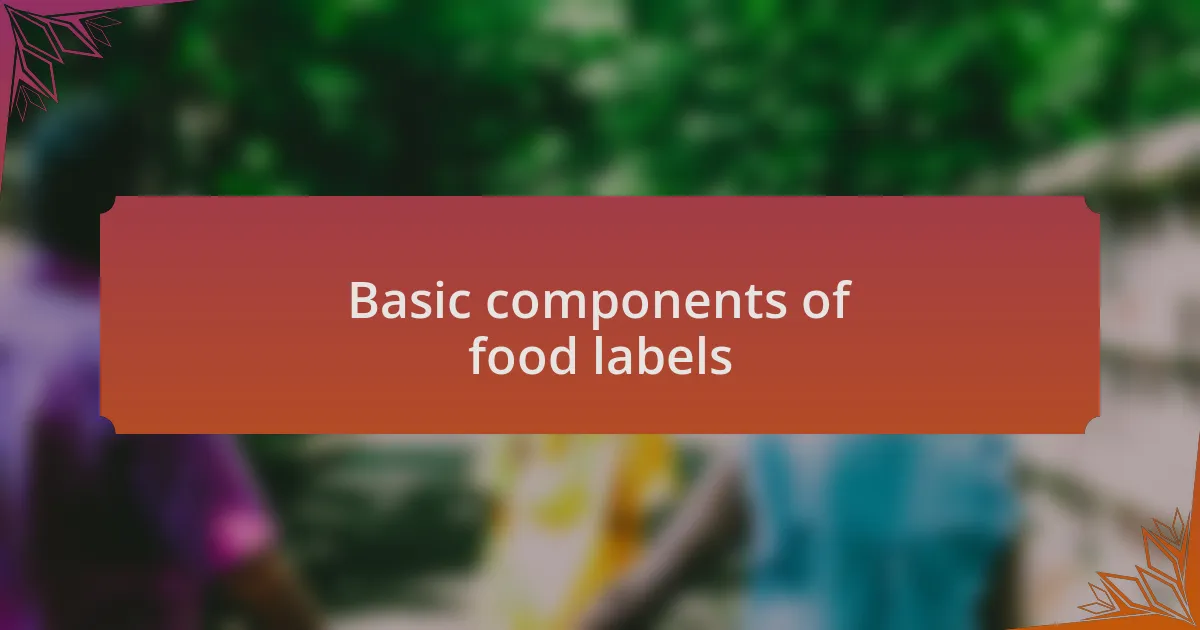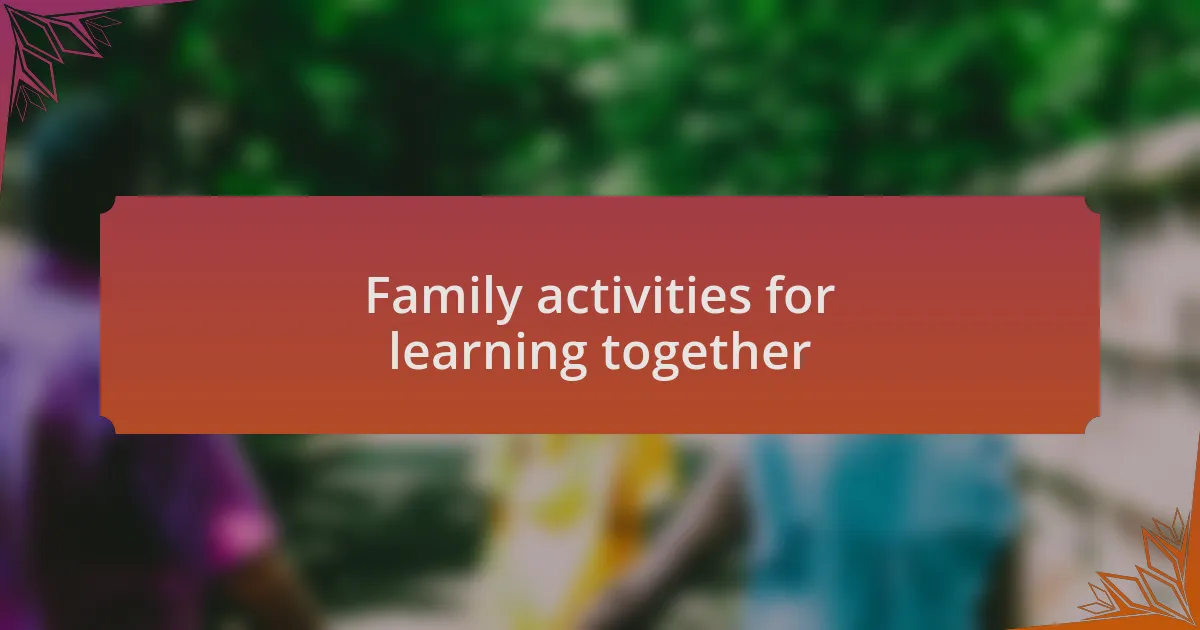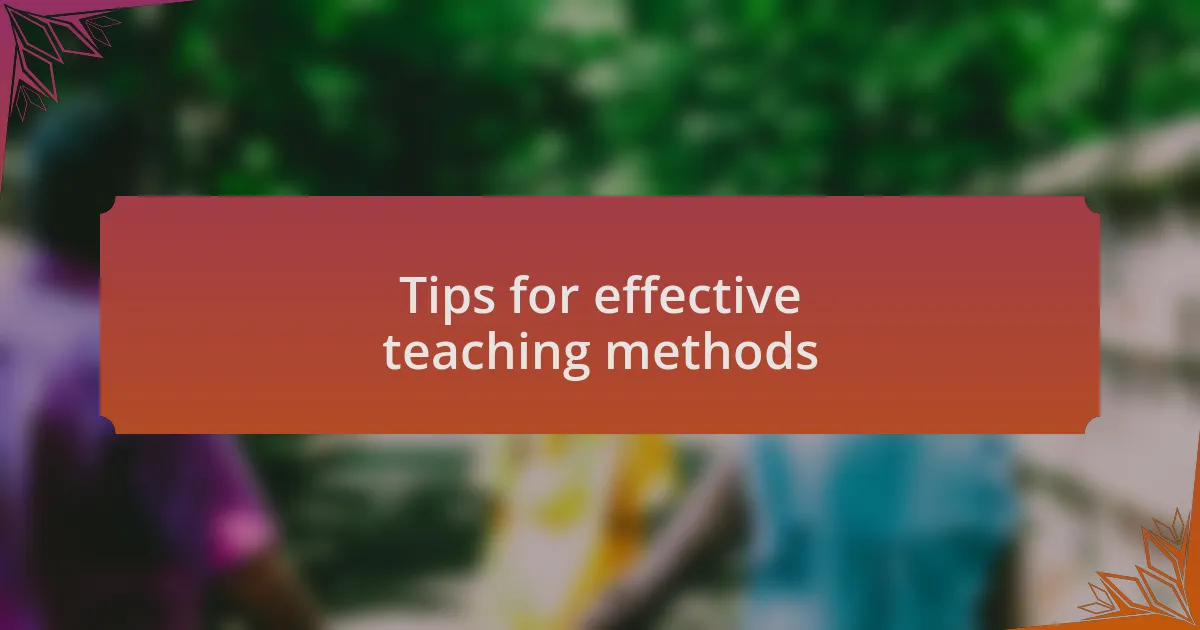Key takeaways:
- Understanding food labels empowers consumers to make informed dietary choices, identify allergens, and promote healthier eating habits.
- Teaching children to read food labels fosters critical thinking, autonomy, and a positive relationship with food.
- Engaging family activities, like scavenger hunts and cooking together, can enhance label comprehension and encourage discussions about nutrition.
- Using real-life examples, visuals, and games can make learning about food labels more effective and enjoyable for children.

Understanding food labels importance
Understanding food labels is crucial for making informed choices about the nutrition we provide for ourselves and our families. I remember the first time I scrutinized a label, feeling empowered when I realized that a seemingly healthy snack was loaded with sugar. Have you ever felt that mix of surprise and concern when you discover what’s really in your food?
Food labels serve as a map in the complex world of grocery shopping, guiding us toward healthier options. I often think of them as a form of communication between the product and me, each term carrying a weight of importance, from ingredient lists to calorie counts. When I first learned to decode these labels, it felt like unlocking a secret that kept my family’s diet healthier.
Additionally, understanding food labels helps us spot allergens or ingredients to which we might be sensitive. There was a time when my child had an unexpected reaction to a snack—an experience that stressed the importance of vigilance. Knowing how to read food labels not only safeguards our health but also fosters a sense of control and awareness in our daily decisions.

Benefits of teaching children
Teaching children to read food labels offers essential life skills that can significantly impact their health and well-being. When my daughter first learned to recognize the difference between whole grains and refined sugars, I witnessed a shift in her choices at snack time. She began asking questions like, “Does this have too much sugar, Mom?” This newfound curiosity not only made her more conscious of what she consumed but also sparked meaningful conversations about nutrition.
Another remarkable benefit is the development of critical thinking skills. I recall a dinner outing when my son took the initiative to check the menu for allergen information. It reminded me of how empowering it is to equip kids with the knowledge they need to make safe choices. When they understand labels, children begin to trust their ability to navigate food choices independently. Who wouldn’t want their child to feel that sense of autonomy and confidence?
Additionally, teaching kids about food labels can foster a positive relationship with food. I noticed that my children started seeing food as more than just sustenance; they began to appreciate the role of nutrition in their overall health. They even started to enjoy helping me cook, eagerly reading the labels and suggesting healthier alternatives. Isn’t it rewarding to see them embrace healthy eating habits at such a young age?

Basic components of food labels
To effectively understand food labels, one must first grasp the essential components. The Nutrition Facts panel stands out as a crucial section, displaying vital information such as serving size, calories, and key nutrients. I remember when I showed my son how to estimate calories based on serving sizes, which led him to realize that some seemingly healthy snacks were actually higher in calories than he expected. Have you ever had a similar revelation about your food choices?
Ingredients list is another fundamental aspect of food labels. It’s not just about what’s in the food; it’s about knowing what to avoid. I vividly recall a shopping trip when my daughter spotted “high fructose corn syrup” in a cereal we usually bought. Her curious inquiry about what that meant sparked a deeper conversation about added sugars. Isn’t it amazing how these moments can transform our grocery lists?
Lastly, it’s important to identify allergen information, especially for families with dietary restrictions. I still recall the anxiety I felt when my friend’s child had a severe allergy incident at a birthday party. Since then, I’ve made it a point to teach my kids how to look for allergens on labels, empowering them to make safe choices. This vigilance not only safeguards their health but also instills a sense of responsibility in them. How comforting would it be to know your child can confidently check food for allergens?

Family activities for learning together
One fun family activity I cherish is creating our own food label scavenger hunt at the grocery store. We split into teams and race to find products with specific ingredients or nutritional milestones, like a cereal with less than 10 grams of sugar. It’s remarkable how this playful approach turned the mundane task of shopping into an exciting learning adventure that my kids look forward to!
Cooking together can also be a wonderful opportunity to deepen your understanding of food labels. I remember an afternoon when we prepared a family meal, using ingredients selected based on their labels. As we mixed and stirred, we discussed why we chose some items over others. This not only reinforced label comprehension but sparked an appreciation for healthier cooking choices—creating delicious memories along the way. Have you ever realized how learning can happen seamlessly in the kitchen?
Another engaging option is hosting a family discussion night focused on food choices. I often gather my kids around the table after dinner to share interesting facts we’ve learned during the week about food labels. It creates an open space for their curiosities and fosters critical thinking about what we eat daily. This exchange of ideas enriches our family bond while empowering each of us to make informed food decisions. What are some conversations you’ve had that inspired you to think more deeply about food?

Tips for effective teaching methods
When teaching children about reading food labels, I’ve found that using real-life examples makes a significant difference. For instance, the other day, my daughter asked why we avoid certain snacks. So, I grabbed a few packages and highlighted the ingredients and nutritional facts. Seeing her eyes widen when she realized how much sugar was hidden in a seemingly innocent treat made the concept of label reading more tangible for her.
Another technique that works effectively is using visuals. I’ve printed out charts that explain various components of food labels, including serving sizes and daily values. When my kids can see these explanations in front of them, they often make connections more quickly. It’s amazing how a simple visual guide can spark a desire to learn more about what they’re consuming. Have you ever noticed how visuals can transform a complicated topic into something easily understandable?
Incorporating games into the learning process can also elevate engagement levels immensely. I remember setting up a mini-competition where my kids had to guess the healthier option among two similar products. This not only made the activity fun but also encouraged them to think critically about their choices. Does it not make sense that learning is more effective when it feels less like a chore and more like a game?